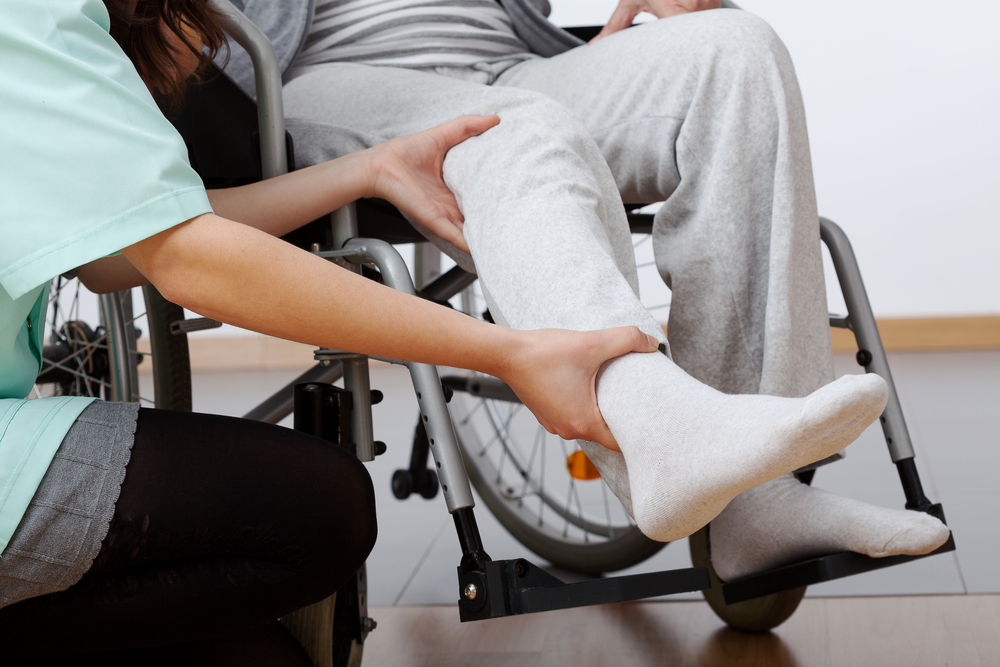Baclofen Can Be Better Than DBS for Adult CP Patients, Study Suggests

Treatment with baclofen administered directly into the spinal fluid is less invasive and more effective than deep brain stimulation to improve the quality of life of adults with cerebral palsy (CP), a retrospective and comparative study shows.
These findings were reported by Korean researchers in a study titled “Intrathecal Baclofen Pump versus Globus Pallidus Interna Deep Brain Stimulation in Adult Patients with Severe Cerebral Palsy,” published in World Neurosurgery.
People with CP often experience severe motor function impairment and pain that can affect their quality of life and daily activities. CP is also a common cause of spasticity (uncontrolled continuous muscle contraction) and secondary dystonia (uncontrolled muscle movements and contraction).
Although muscle and motor symptoms associated with CP, as well as their impact, are well-known and widely recognized, there are still no standardized strategies to manage them. Deep brain stimulation (DBS) and intrathecal baclofen (ITB) infusion pump are among the available therapies.
DBS requires surgical implantation of electrodes in specific brain areas that deliver controlled electrical stimulus. With this approach it becomes possible to reactivate brain cells that control movement and muscles’ behavior and re-establish lost nervous responsiveness.
ITB uses a pump surgically implanted into the spinal canal to deliver the muscle relaxant baclofen (sold under the brand names Gablofen and Lioresal) directly into the spinal fluid.
Although DBS of a specific brain region — called globus pallidus internus — has proven to be effective in patients with idiopathic (unknown origin) or inherited generalized dystonia, its results in patients with acquired dystonia due to CP are still controversial. In contrast, several studies have suggested that ITB is effective to treat dystonia, spasms, and pain in children with CP.
Korean researchers compared the safety, efficacy, and overall outcome of DBS and ITB therapies in adult patients with CP.
They reviewed the clinical records of 12 adult CP patients who underwent DBS treatment and 10 who received ITB therapy. The two groups included patients who had different muscle manifestations, including spasticity, dyskinesia, or mixed presentation. Seven patients in the DBS group and three in the ITB group were able to walk.
Patients in the DBS group showed significant improvement postoperatively, with reduced movement impairment and pain. However, no meaningful improvements were noted regarding their disability and patient self-reported general health scores compared to before the surgery.
In contrast, treatment with ITB was associated with significant lessening of disability and pain scores, as well as improvements in patient self-reported physical functioning, vitality, social functioning, mental health and diminished body pain 12 months after the surgery.
Comparison showed that the DBS-treated patients experienced more significant improvements in movement, while the ITB group showed significantly better outcomes in self-rating improvement scores and mental health.
In general, none of the treatment strategies was found to be associated with serious or life-threatening complications.
Some patients in the DBS group experienced dysarthria (difficulty speaking), mood changes, and facial muscle weakness. These were resolved upon adjustment of the stimulation parameters.
Patients treated with ITB complained of baclofen dose-related headache and nausea. Only one patient had mechanical complications with the injection pump that required pump or catheter revision.
“Compared to DBS treatment, ITB therapy results in greater improvement of postoperative satisfaction and health-related quality of life, especially mental health,” researchers said. Supported by this finding, the team recommends the use of the “relatively less invasive and safe ITB therapy in the surgical treatment of severe CP patients who are refractory to medication.”
Additional studies are still warranted to further confirm these findings and better define the safety and efficacy of these surgical treatment strategies in larger groups of patients with CP.


